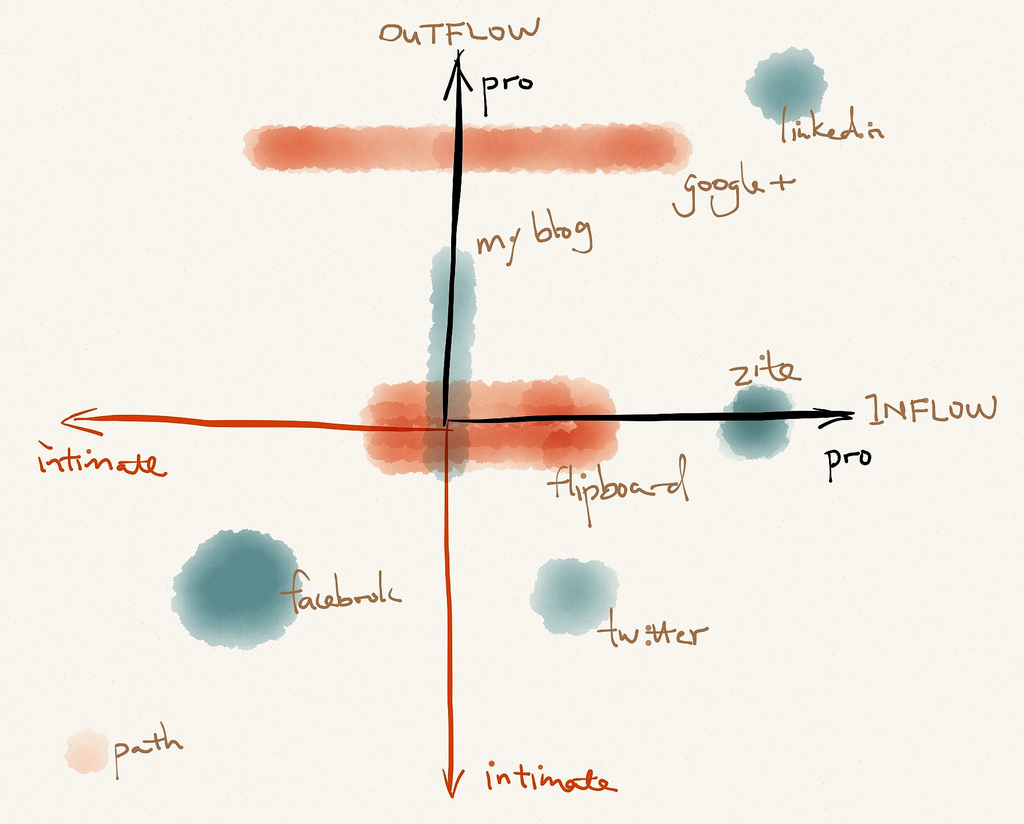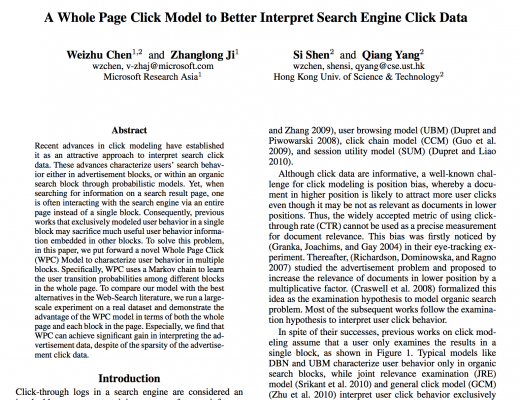The battlefield of new network era is filled with the struggling between the image of being personal and professional. Taking myself as an example, after eight years of blogging, I still have not quite figured out what to put on my blog. Should it be my personal life journal consisting of all the teeny weeny details or a “valuable” site solely including serious critics and reviews? It does not take personal experience to see the dilemma here: me and my folks are for the private yet relating day-to-day trifles, which normal visitors do not care a bit. Observing an increasing number of visitors and subscribers to my blog, I found myself in a difficult situation where an absolute control of the content therein had been compromised. Needless to say, more audience leads to greater cautions.
This is the dilemma that all current social networks are suffering from. If we draw a horizontal axis with intimate information inflow on the left end and professional inflow on the right, a vertical axis with intimate information outflow at the bottom and professional outflow at the top, then sites like Facebook (intimate inflow and outflow), LinkedIn (professional inflow and outflow), and many others can find their spots or, in some cases, areas in this realm. Although the distribution is subject to the user, it can provide an illustration why we, or at least myself, have to use a number of Internet services to cover our needs and purposes.
So the question rises. Is there a way to fulfill the whole range of need? Google Plus seems to be a not so successful attempt from a writer’s perspective: once you follow a user (the writer), it becomes his or her responsibility not to spam your feeds with uninteresting posts. If the writer has more than one area of talents and you unfortunately enjoy only one of them, then the writer, unknowning your preference, is very likely to push unnecessary posts to you. The good news is for the writer to control information outflow. Overwhelming data have turned the competition into filter games. A more intuitive approach, compared to the writer filter, is a topic filter, as adopted by some news/magazine apps (Flipboard, Zite, etc.). In Zite, you select topics of your interest and trust the app to build a customized binder where writers’ identities are mostly neglected. Flipboard, by allowing users’ subscriptions to particular feeds, expands the topic filter so that a combination of intimate and professional information inflow can be effectively controlled.
Personally, I like how Pinterest tackles the problem through the concept of board, which points out a middle field for both inflow and outflow. Pinners choose to pin on a particular board and followers can subscribe to boards independently. The model can be easily generalized to a text-based network through taxonomized tags, which could let the writer maintain information outflow. The intimate interactions between friends can be implemented by a personal tag requiring explicit approval to follow. All tags, or even the higher level taxonomy, can be subscribed independently so that inflow is controlled by the reader. A writer keeps his or her right to block some readers from particular tags. In a word, tags and followers are highly independent and manageable. The sketch can surely be more sophisticated or trendy by adopting recommender systems, for both tagging and subscribing, that flood our webpages today.
It is never my intention to spam my readers who are here for some serious posts with my daily nuances, although a record of life is what motivates me to start blogging in the first place. If there is a website that can handle the intimacy and profession matching with ease, I will not have to keep multiple blogs for different topics and the numerous confusing ifttt tasks will no longer be necessary. Until then, I am opening my flowchart to see which goes where.




